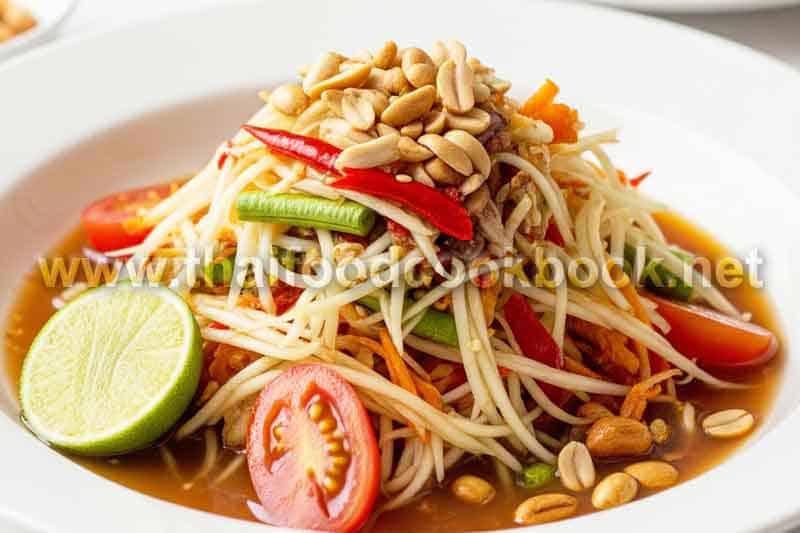Thai Street Food Etiquette – How to Order Like a Local
Many travelers arrive in Thailand excited to taste authentic Thai street food but often feel unsure about how to order correctly, how to speak to vendors politely, or how to adapt to the local dining culture. This uncertainty can lead to awkward interactions, overpaying, or missing out on signature dishes because they don’t know how locals communicate at night markets and food stalls. Learning simple etiquette helps travelers connect with vendors more comfortably and enjoy dishes exactly the way Thai people order them. Understanding portions, spice levels, and respectful communication also ensures a positive cultural experience. We specialize in creating high-quality travel content that teaches visitors how to order like a local while helping hospitality businesses, travel agencies, and food blogs educate their audiences through expert-written longform articles that attract engaged readers searching for local dining guidance.
Understanding Basic Etiquette Before You Order
Before ordering at a street stall, knowing a few cultural habits goes a long way toward making your experience smooth and enjoyable. Thai street food culture focuses on friendliness, humility, and respect for the cook — not rushing the vendor or acting impatiently. When approaching a stall, try to follow these helpful etiquette basics:
- Greet the vendor with a smile — a simple “sawasdee kha/krap” creates instant warmth.
- Wait to be acknowledged, especially during rush hours when stalls get busy.
- Point or gesture politely if you don’t know the dish name; most vendors are used to this.
- Keep cash ready — most stalls do not take cards, especially in local neighborhoods.
- Look for a signboard listing ingredients, since every stall may prepare dishes differently.
This friendly and patient communication is a key part of dining like a local. Visitors quickly discover that politeness often results in better service, larger portions, or helpful recommendations from the vendor. Taking a moment to observe how locals order can also help you understand the customs surrounding table seating, food pickup, and self-service condiments, all of which differ from Western-style dining habits.
How to Order Like a Local (Step-by-Step)
Ordering Thai street food is not just about choosing a dish — it is about customizing flavor to match your preference, which is something Thai people do naturally. Here is an easy step-by-step way to order like a local:
- Choose the dish – Start by pointing or naming what you want.
- Customize spice level – You can say “mai pet” (not spicy), “pet nit noi” (a little spicy), or “pet mak” (very spicy).
- Specify takeaway or dine-in – “Gin tee nee” means eat here, “sai thao” means takeaway.
- Add-ons or upgrades – Many stalls offer extra egg, noodles, seafood, or toppings.
- Pay after finishing – In most stalls, you pay at the end, not the beginning.
This simple ordering pattern makes travelers feel confident and respectful, while vendors appreciate the clarity. Thailand’s food culture is flexible and welcoming, so asking questions is always acceptable — just remember to keep your tone soft and polite, as locals value calm body language and gentle interactions at food stalls.
Respecting Local Dining Customs at the Stall
Once your order arrives, there are a few unwritten rules that help you blend in smoothly with Thai diners. These customs show that you understand and respect the food culture, which enhances your connection with local communities. A few important customs include:
- Use the condiments provided — small flavor adjustments are expected and encouraged.
- Return dishes or trays to the station if the stall provides a drop-off counter.
- Avoid occupying seats for too long after eating during busy hours.
- Do not rearrange the vendor’s workspace — many are compact and tightly organized.
- Keep noise low — food stalls are lively, but personal respect is still highly valued.
Once you become comfortable with these cultural habits, every street food interaction becomes more enjoyable and natural. For travelers who want to deepen their cultural appreciation, etiquette is more than politeness — it is a bridge to authentic taste, meaningful travel experiences, and positive relationships with local vendors.
Summary
Ordering Thai street food like a local is not about speaking perfect Thai — it is about learning the rhythm of local dining culture and showing gentle respect toward the people who prepare the food. By observing etiquette, customizing orders politely, and using simple phrasing, travelers gain more authentic experiences and better connections with Thai cuisine. If you want expert-written cultural or food travel content like this crafted for your own website, we can create high-impact guides that attract travelers, build trust, and help your brand stand out online.

